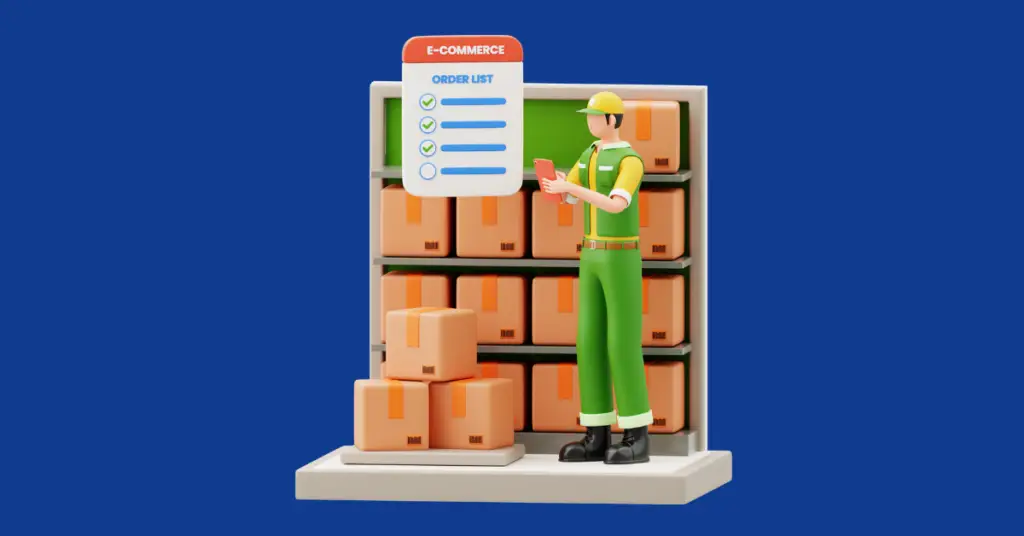Effective warehouse inventory management is crucial for any business that stores and sells products. Efficient inventory control helps maintain stock levels, orders are processed promptly, and the warehouse operates smoothly. This blog will delve into essential strategies for controlling inventory in a warehouse, focusing on key aspects like warehouse management systems, differences between inventory and warehouse management, and best practices for maintaining efficiency.
What Is Warehouse Inventory Control?

Warehouse inventory control refers to the process of overseeing and managing the inventory stored in a warehouse. It involves tracking the quantities of products, monitoring their movement, and ensuring that stock levels are maintained to meet customer demands. This process is essential for preventing stockouts, overstocking, and ensuring that the warehouse operates efficiently.
Warehouse inventory control encompasses various activities:
- Tracking Inventory: Monitoring the amount of stock on hand and its location within the warehouse.
- Auditing: Regularly checking inventory levels against records to ensure accuracy.
- Re-filling Stocks: Ordering new stock when inventory levels drop below a predefined threshold.
- Managing Outgoing Items: Ensuring that products are shipped out promptly and accurately.
Warehouse Management Systems
A Warehouse Management System (WMS) is a specialized software designed to help manage inventory within a warehouse. It provides several key features:
- Real-Time Tracking: Allows you to monitor the exact location and status of inventory items.
- Inventory Control: Helps in maintaining optimal stock levels and reducing the risk of stockouts.
- Order Fulfillment: Facilitates picking, packing, and shipping of orders.
- Forecasting: Uses historical data to predict future inventory needs.
An effective WMS integrates with broader business resource management systems (ERP), providing a comprehensive solution for managing inventory across the entire business.
Differences Between Inventory Management and Warehouse Management
While inventory management and warehouse management are related, they focus on different aspects of stock control:
- Inventory Management: Encompasses the entire process of overseeing a company’s inventory, from procurement to sales. It includes managing purchase orders, stock levels, and sales forecasts.
- Warehouse Management: Specifically deals with the storage and handling of inventory within a warehouse. It focuses on optimizing warehouse operations, such as layout design, space utilization, and efficient order fulfillment.
Warehouse management is a subset of inventory management, ensuring that stored items are organized, easily accessible, and ready for shipment.
Key Features of Warehouse Management Systems

- Inventory Tracking: A WMS helps keep track of every item’s location within the warehouse, ensuring accurate and up-to-date information on stock levels.
- Barcode Scanning: Utilizes barcode technology to automate data entry, reducing errors and speeding up inventory management processes.
- Reporting and Analytics: Provides detailed reports on inventory levels, order fulfillment, and other key metrics, helping businesses make informed decisions.
- Integration Capabilities: A good WMS integrates with other business systems, such as ERP and accounting software, for seamless data flow and improved efficiency.
Best Practices for Managing Warehouse Inventory
- Effective Warehouse Design:
- Organize Space: Design your warehouse layout to optimize space utilization and ease of access. Group similar items together and ensure high-demand products are easily accessible.
- Labeling: Clearly label storage areas and shelves to improve efficiency and reduce the time spent searching for items.
- Streamline Workflow:
- Receiving Inventory: Establish a process for receiving and inspecting new stock to ensure it meets quality standards and is accurately recorded.
- Order Processing: Implement efficient procedures for picking, packing, and shipping orders to minimize delays and errors.
- Utilize Technology:
- Automate Tracking: Use barcode scanners and RFID technology to automate inventory tracking and reduce manual data entry.
- Implement WMS: Invest in a robust warehouse management system to streamline operations and improve accuracy.
- Regular Inventory Checks:
- Cycle Counting: Conduct regular cycle counts to verify inventory accuracy and identify discrepancies early. Focus more on high-turnover items.
- Periodic Audits: Perform comprehensive inventory audits periodically to ensure overall accuracy and address any long-term issues.
- Optimize Inventory Levels:
- Just-In-Time (JIT) Inventory: Implement JIT practices to reduce excess stock and minimize holding costs while ensuring timely replenishment.
- Safety Stock: Maintain a safety stock level to buffer against unexpected demand spikes or supply chain disruptions.
- Training and Development:
- Employee Training: Train warehouse staff on best practices, safety procedures, and the use of inventory management systems to enhance efficiency and reduce errors.
Planning and Workflow Optimization

To ensure your warehouse operates smoothly, consider the following aspects in your planning and workflow:
- Inventory Reception: Define clear procedures for receiving and processing new inventory, including inspection, labeling, and storage.
- Inventory Tracking: Choose between serial tracking for high-value items and lot tracking for bulk items. Utilize barcode scanners for automated updates.
- Cycle Counting: Schedule regular cycle counts to track inventory accuracy and prevent stock loss.
- Accounting Methods: Implement appropriate accounting methods, such as FIFO (First In, First Out) or LIFO (Last In, First Out), to manage inventory costs and valuations effectively.
Conclusion
Controlling inventory in a warehouse requires a combination of effective management practices, technological tools, and strategic planning. By understanding the differences between inventory and warehouse management, implementing a robust warehouse management system, and following best practices, businesses can enhance their warehouse efficiency and improve overall inventory control. Whether you’re optimizing your warehouse design or leveraging technology, a well-organized and efficient warehouse operation is crucial for maintaining a successful supply chain and meeting customer expectations.
Related Content






